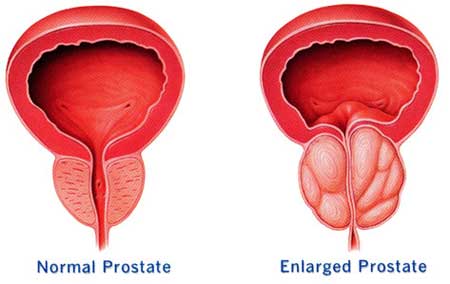
Zap it: A tiny ‘plasma gun’ could ?provide a cure for an enlarged prostate
A tiny ‘plasma gun’ could ?provide a cure for an enlarged prostate, a ?condition that affects 2.5 million men in Britain.
The device, which sits at the end of a probe, produces bursts of energy and is being used to treat benign prostatic hyperplasia, or BPH. This is where the prostate becomes enlarged as a result of age.
The prostate gland sits around the ?urethra, the tube that carries urine from the bladder out of the body. as the gland gets bigger, this affects the flow of urine, causing symptoms such as difficulty ?urinating. if left untreated, an enlarged prostate can cause kidney problems.
Most men with an enlarged prostate are treated with drugs that they have to take for the rest of their lives. but if medication does not work, some end up needing ?surgery to address the problem.
Unfortunately, the surgery is not always successful and can cause pain and bleeding. The new device, called the Plasma Button, zaps away excess prostate tissue without causing any bleeding.
It works by using electricity to produce a ‘plasma field’ — an intense burst of energy emanating from the button-shaped device.
As it hovers a couple of millimetres above the prostate, this energy heats the surrounding tissue until it is vaporised or turned into steam.
The button shape gives surgeons greater control when it comes to sculpting the remaining tissue so it is left smooth and unlikely to cause any further blockages. The ?procedure, which takes just a few minutes, provides instant relief.
The prostate is a walnut-shaped gland that produces semen. at ?different stages in a man’s life, it grows. The first time is during puberty, when it doubles in size, and the second begins around the age of 25, when it starts to expand at a much slower rate.
This steady growth continues for two or three decades, until the prostate presses on the urethra.
The first sign of the condition is usually trouble passing urine or ?difficulty starting even when the bladder is full.
As it develops, men need to get up several times a night and, in many cases, can’t venture out without planning their access to a loo.
Left untreated, BPH can cause kidney damage if it becomes ?impossible to urinate. It can also lead to bladder stones, depression and daytime tiredness due to ?constant broken sleep.
The exact cause remains unclear, but it may be due to high levels of the hormone testosterone, which is thought to stimulate the growth of abnormally high numbers of ?prostate cells.
Scientists have noticed that men who have been castrated early in life — and therefore ?produce no ?testosterone — never get BPH.
Treatment often involves ?alpha-blockers — drugs that relax muscle fibres within the prostate, but do not reduce its size. They can also cause dizziness and headaches.
Another group of drugs are 5-alpha-reductase inhibitors, which inhibit the growth of the ?prostate and make it shrink. but up to one in 20 men develops erection problems as a result of the drugs.
Around 50,000 men a year end up having surgery to correct the ?problem after drug therapies have failed.
But existing techniques, which usually involve using a ?surgical ‘loop’ to lop off excess ?tissue or burning it away with lasers, can have mixed results.
The Plasma Button, developed by U.S. technology firm Olympus, could be another effective option.
Research shows it causes almost no bleeding, requires less time in hospital and patients report much less discomfort than with other techniques.
Recently launched in the U.S., the button therapy could become available in Britain in two years.
‘This looks quite promising. It’s a new way to treat BPH ?surgically without causing ?bleeding or clotting afterwards,’ says Professor Roger Kirby, director of The ?Prostate ?Centre in London.
‘as the population ages, BPH is going to become more of a ?problem. So anything that enables us to deal with it more quickly and efficiently has got to be welcomed.’
Hundreds of men diagnosed with prostate cancer are opting to delay aggressive treatment in favour of being closely monitored, according to a study.
Until recently, many sufferers underwent ?surgery, but it often has serious side-effects such as impotence and incontinence.
Active surveillance — pioneered by Dr Chris Parker, of the ?Institute of Cancer Research — ensures men receive treatment only if they genuinely need it.
They are monitored ?by biopsy and testing levels of prostate ?specific antigen in the blood to see if their cancer progresses.
The method allows some men to avoid surgery and radiotherapy.
The study analysed 43,000 men diagnosed with localised prostate cancer. of those eligible, four in ten of them chose active surveillance.
‘This growth in active surveillance use represents a significant shift of clinical ?practice in Britain and ?contrasts sharply with the U.S., where 95 per cent of low-risk patients have ?radical treatment,’ says Dr Parker.